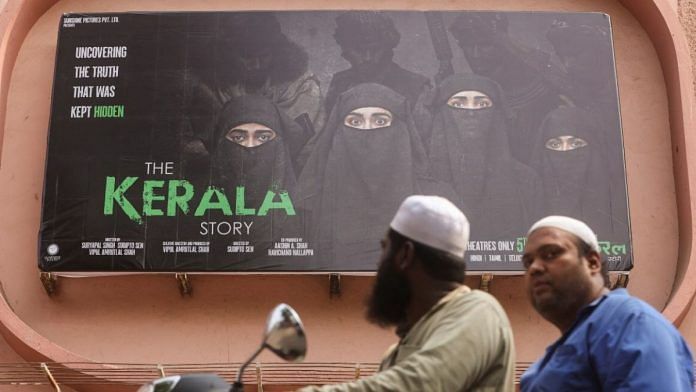New Delhi: “You cannot make fundamental rights be dependent on public display of emotion. Public display of emotion has to be controlled. You don’t like it, don’t see it,” the Supreme Court observed Thursday, while staying West Bengal’s ban on the controversial movie “The Kerala Story.”
A three-judge bench led by Chief Justice D.Y. Chandrachud also directed Tamil Nadu to make adequate security arrangements in theatres where the movie is being screened.
Tamil Nadu has claimed there was no direct or indirect ban on the movie in the state and that cinema halls had themselves stopped its screening.
The court also questioned the filmmakers on their claim about the “deceitful conversion” of 32,000 women from Kerala and recruited to ISIS. When the court objected to this unverified data, the film producer agreed to add a disclaimer by 5 pm on 20 May that the film “represents a fictionalised version of the subject matter”.
The above three directions were issued on a set of petitions raising myriad issues around the movie. While the filmmaker challenged the ban on the movie’s screening in West Bengal and Tamil Nadu, a set of petitions wanted a complete prohibition on its viewing.
While the court provided interim relief to the filmmaker, it said it would look into the other petitions only after seeing the movie. A hearing on their plea will happen in July, since the court is closing for a summer recess.
With regard to the West Bengal government’s ban, the court found it strange that it took such an action on the opinion of 13 people. Senior advocate Harish Salve, appearing for the filmmaker, informed the bench about the manner in which the West Bengal ordered the ban.
He said the state’s decision was based on certain reports by intelligence officers who had watched the movie. “They picked up 12 to 13 people, who said the movie is terrible and will cause riots,” the senior advocate submitted.
Referring to West Bengal’s response to the petition, Salve said the state had cited an incident of violence in Maharashtra, which allegedly was sparked by an Instagram post on the movie. “However, the movie is not banned in MAharashtra,” Salve added.
When the state counsel, senior advocate Abhishek Manu Singhvi, said the ban on the movie was imposed to preserve public peace, the bench remarked: “You are saying that the ban of the film is on the basis of 13 people. You get any 13 people and they will say ban any movie. Unless you are showing them cartoons.”
The CJI faulted the state for invoking a provision of the West Bengal Cinema Regulation Act. It said: “Section 6 (of the law) cannot be utilised to put a premium on public intolerance.”
“Hence, the order of the Additional Secretary of the Government of West Bengal in the Department of Information and Cultural Affairs dated 8 May, 2023 shall remain stayed,” the court ordered.
The court disagreed with Singhvi’s contention that the demographic profile of the state was different from the others which were screening the movie. It said power should be exercised in a proportional manner, preventing the screening in places where problems are likely to be expected. The authorities should not impose a complete ban across the state, as has been done in this case.
“Who has applied the mind to ban it all over,” wondered the bench, which told Singhvi that it would be incorrect to presume the same demographic profile exists all over the state and added that’s why district magistrates were given the power to use it for the whole or part of a state.
At the same time, the court did not appreciate the projection made in the film over the number of women who have allegedly converted and said the figure of 32,000 was “distorted”. It asked Salve to address it, which was agreed upon by the senior counsel.
Salve assured the bench that a clarification would be added in the film that there was no authentic figure available on conversion.
Also read: Not just a ‘Kerala story’ — at least 28 Indian women joined IS in 10 yrs, most met death or prison



